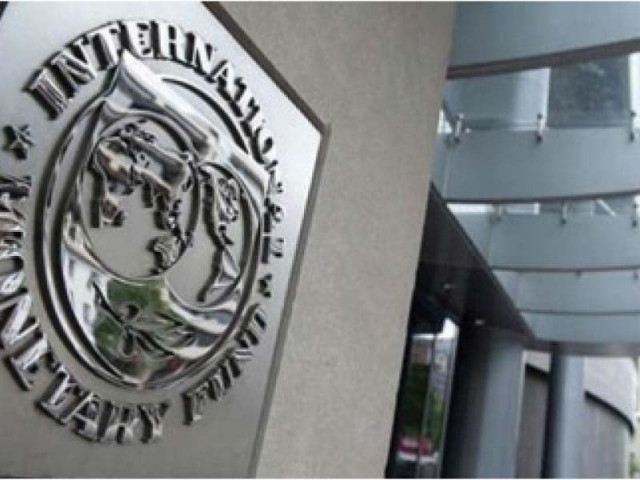Pakistan, IMF remain poles apart as power sector debt skyrockets
Virtual meeting between Finance Minister Dar and IMF mission chief remains inconclusive, say sources

Pakistan and the International Monetary Fund (IMF) on Thursday could not agree on a roadmap for recouping on an average monthly Rs123 billion power sector losses that are further ballooning highly unsustainable circular debt.
Finance Minister Ishaq Dar held a virtual meeting with the IMF mission chief, Nathan Porter, aimed at finding a common ground to address the power sector issues, according to sources. The power sector has become the biggest stumbling block in the way of the 9th IMF review mission, which is the prerequisite for the approval of the next loan tranche of over $1.1 billion.
The government added Rs393 billion into the circular debt during July-September period, which further increased to nearly Rs500 billion by end October, according to the documents and the government sources.
The discussions also took place on the revenue collection from the petroleum levy, as the government has now further downward revised its earlier revised projection of Rs800 billion collections.
The meeting remained inconclusive and the Ministry of Finance did not issue a press statement, departing from its earlier practice.
The Pakistani side shared a plan with the IMF that talked about increasing electricity prices on account of interest cost on the stock of the circular debt and advance quarterly tariff adjustments, the sources said.
The plan also included the resolution of the K-Electric outstanding dues and the agriculture-tube wells subsidy.
The IMF will review the plan and then give its feedback, said a government official. He said that both sides have agreed to remain engaged.
As per the revised schedule, the IMF board was supposed to approve the 9th review and release of the tranche by November 3rd. However, due to Pakistani authorities’ failure to meet the programme conditions for the 9th review, the global lender has not yet dispatched a mission to Pakistan.
The IMF is seeking a clear roadmap for the power sector, taxation and addressing any fiscal imbalances due to three key factors –higher than agreed circular debt during the current fiscal year, higher than agreed primary budget deficit and expenses on flood rehabilitation and reconstruction, according to the sources.
The meeting ended inconclusive the day the State Bank of Pakistan reported that Pakistan’s gross official foreign exchange reserves dipped to the further lowest level of mere $6.1 billion –remaining at nearly nine years lowest level. The same day, the Standard & Poor’s credit rating agency downgraded Pakistan to ccc+, the lowest rating by the global agency since December 2008.
The sources said that Pakistan and the IMF have different understanding on the question of calculation of the primary deficit –the gap between revenue and expenses after excluding interest payments. The IMF calculates the gap after including the deviations against the annual circular debt plan.
This week, the Prime Minister’s Office has been informed that in the base case scenario, there will be Rs700 billion to Rs803 billion deviations against the Circular Debt Reduction Plan 2023. The circular debt that was less than Rs2.4 trillion by June, has already jumped to Rs2.8 trillion after incorporating the excesses, said the sources.
The government has assured the IMF that it would lower the losses incurred due to low recovery of bills and higher transmission and distribution losses by enacting the Electricity Theft (Control) Ordinance 2022. The Ordinance will empower the Electricity Police to arrest the culprits and charge them under the Code of Criminal Procedure.
Similarly, the IMF was informed that the government has identified the high losses feeders that will be separated and marked to control the theft and increase recoveries.
During the first quarter, the government added Rs104 billion into the circular debt due to 10% less than the targeted recoveries of the bills. The IMF was assured that this gap will be minimised in the coming months. About 20% feeders were causing over Rs280 billion annual losses. At Pishin, Loralai, Sibi, Khuzdar, Makran, Bannu, Dadu and Larkana circles, the line losses are more than 60%. There are another one dozen cities where the losses are in the range of 30% to 60%.
The Fund has been informed that a new Power Purchase Agreement will be signed with the K-Electric that will take care of another about Rs135 billion projected addition in the circular debt during the current fiscal year.
Similarly, consultations with provinces on subsidy rationalisation for agriculture tube-wells have concluded.
The sources said that there was also a proposal to increase the existing debt surcharge by another 60 paisa per unit, which will address the problem of another Rs65 billion projected deviation from the agreed annual plan.
The government also informed that the Rs80 billion negative impacts due to delayed implementation of the Rs7.91 per unit increase in electricity prices from July through October will be neutralized during the remainder period of the current fiscal year.
There was another issue of delayed implementation of the quarterly tariff adjustments and lower than estimated collection due to less sales of the electricity. Pakistan has assured that this problem can be solved by ensuring 80% advance recovery of the quarterly tariffs.
In case, the government remains unable to solve some of these problems, the cost of electricity will have to be increased by at least Rs2.37 per unit only to cover some of the losses during July-October period.
The energy ministry had worked out three options to bridge the estimated Rs700 billion gap against the annual circular debt reduction plan. Under the first option, the energy ministry had proposed that the government will have to increase the electricity prices by Rs31.60 per unit to recover Rs700 billion for five categories of consumers, excluding the industrialists. These include commercial, bulk, industrial, others and general services.
The second option was to increase tariff by Rs12.59 per unit for all categories. After publication of the story in The Express Tribune, the Power Minister Khurram Dastgir stated that the plan had been made on the advice of the Finance Ministry, which he as a minister had “shelved”.



















COMMENTS
Comments are moderated and generally will be posted if they are on-topic and not abusive.
For more information, please see our Comments FAQ